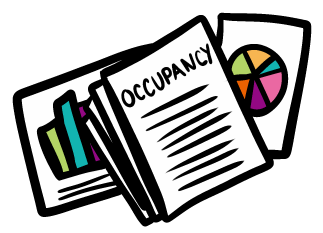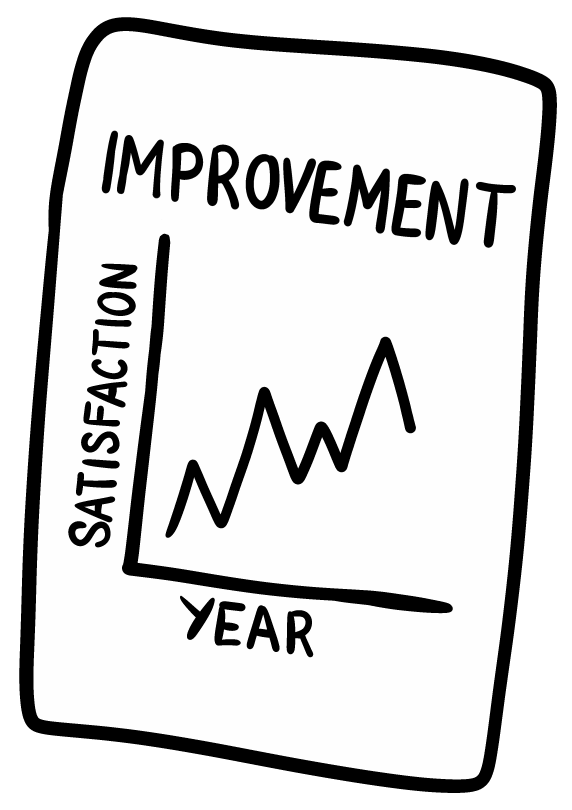
Find Meaning, Motivation, and Improvements
Oh, hey! Welcome to the community!
Assessment is on the forefront for many student affairs professionals. It’s the latest and greatest trendy word for our industry, but behind the buzz is data and proof that our work matters. As part of this broader effort to improve assessment efforts, housing and residence life professionals need solid strategies to make sense of assessment data, drive action, and improve the student experience. Benchmarking is one powerful option.
While benchmarking has become a common practice in higher education in recent years, including in housing and residence life programs, it does come with certain challenges. In particular, there is a perceived complexity to conducting good benchmarking. From the difficulty of doing external and longitudinal comparisons to the cost of external instruments, many higher education professionals consider benchmarking to be complicated and difficult.
Why Benchmark?
The choice shouldn’t be whether or not to use benchmarking or even which type is best. The choice is which types work best for your program and your goals. Campus and departmental context matter. By benchmarking, you’re creating a better understanding of data and using that data to motivate staff and drive meaningful change. You can even use multiple kinds of benchmarking to paint a more vivid picture of your student and staff experience.

Benchmarking involves making comparisons to identify best practices and opportunities for improvement. The most commonly-recognized form of benchmarking is external. For many of us, the term benchmarking means making comparisons to other housing programs or other institutions. But, other types of benchmarking—like making comparisons internally, over time, or to a particular standard—also have significant value to housing and residence life.
Benchmarking doesn’t have to be difficult. There are solid reasons housing programs can and should benchmark. While housing programs choose to benchmark for a variety of reasons, they often fall into three broad categories: meaning, motivation, and improvement.
Meaning
When housing professionals use benchmarking to create meaning, they are looking to make sense out of something that they can observe, but not fully understand. For example, consider a Housing Director who is looking at survey results. The department’s mean score on satisfaction with room assignment processes is a 4.5. The director may know that 4.5 is on the upper half of the 7-point scale, but without context around that 4.5 score, it’s difficult to truly know if it’s good or bad.

Benchmarking can provide the context that the HD needs to tell the story to their stakeholders. If the average room assignment score from other housing programs using the survey is in the lower half of the scale, just being in the upper half is an accomplishment. However, if most programs are well above a 5, then the director and their program might have some work to do. Regardless, benchmarking can help campuses better understand and evaluate survey results.
Motivation

Benchmarking is the spark needed to motivate housing staff. When benchmarking shows a housing program is out-performing other programs, it reinforces and encourages high performance. Staff get excited, find pride in their efforts, and are motivated to continue their hard work. Even internally, staff in one building knowing their survey scores are higher than other buildings builds excitement around their work.
Sometimes, benchmarking shows opportunities for improvement, and that still can motivate staff. When scores are lower, benchmarking data shows that higher performance is possible. When staff notice that other residence halls on their campuses have better survey results, they are motivated to match and surpass them. So, benchmarking can be that spark to motivate staff to do better and provide the evidence that it’s possible to do so.
Improvement

Finally, benchmarking drives efforts around continuous improvement. When benchmarking relates to the mission and goals of your institution and department, is done regularly, and focuses on actionable items, it lays the groundwork for continuous improvement. Housing staff can use benchmarking to identify and set measurable goals. Then, staff can benchmark over time and compare results to monitor progress and ensure that improvements occur across different groups or areas. And, each year, the insights from this process reinforce changes and inform additional efforts. Thus, benchmarking can foster a culture of assessment by driving cycles of learning and continuous improvement.
Making It Happen
In the end, the many types of benchmarking add value for any housing department. The need to conduct quality assessment has been largely embraced in housing and residence life. There is great variation in how this work has evolved and taken root. Our profession continues to reiterate the importance of not only of doing assessment but also getting better at assessment if we are to understand and improve the impact of our work with students.
There are many tools available for benchmarking. If you’re looking to learn more, please don’t hesitate to reach out to any of your friends at eRezLife and attend the webinar on February 4 to learn more about seeing the possibilities of benchmarking.
Welcome to the community. We’re glad you’re here.







